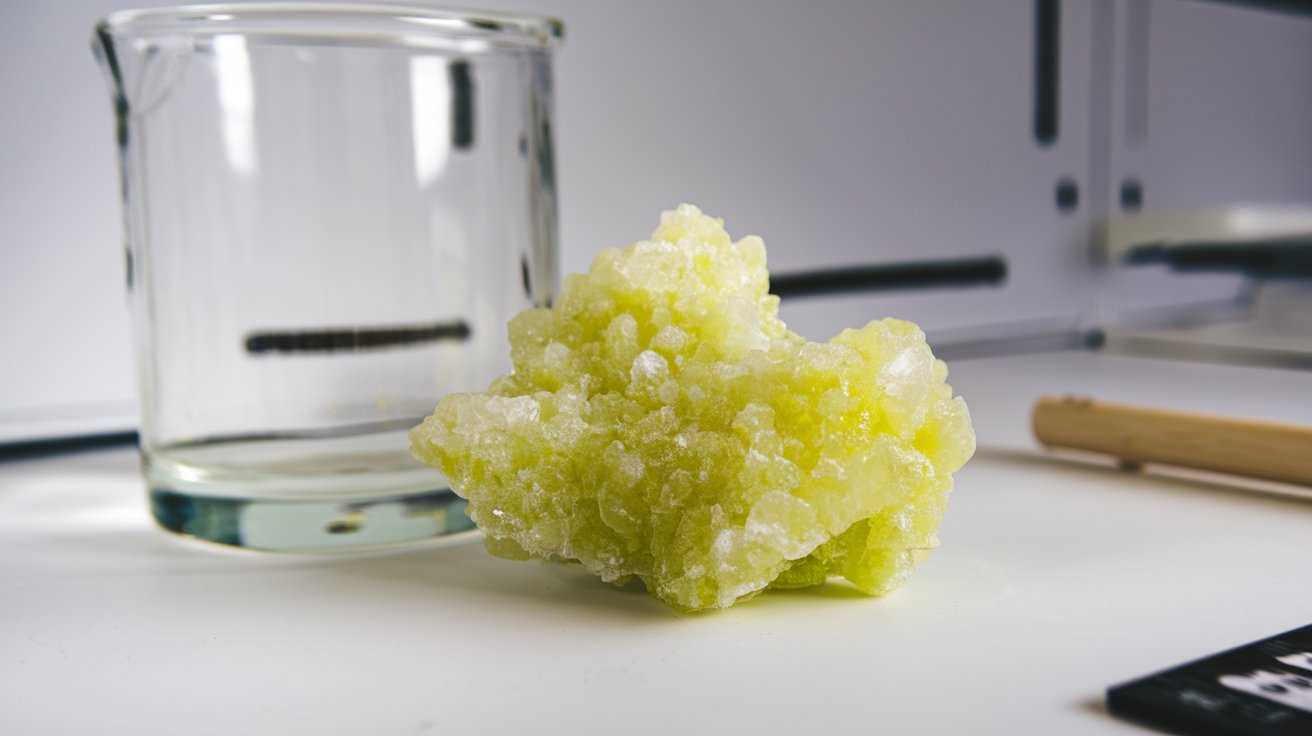
Americium(III) chloride might sound like a mouthful, but this compound holds some pretty cool secrets. Americium, a synthetic element, was discovered during World War II. It’s named after the Americas, and it’s part of the actinide series on the periodic table. Americium(III) chloride is a compound where americium is combined with chlorine. This compound is often used in research and has some practical applications, too. For instance, it’s found in smoke detectors! Curious about more? Here are 30 facts that will shed light on this fascinating compound and its many uses. Get ready to dive into the world of Americium(III) chloride!
Key Takeaways:
- Americium(III) Chloride, or AmCl3, is a fascinating compound with unique properties. It's used in smoke detectors and neutron sources, but handling it requires strict safety measures due to its radioactivity.
- AmCl3 has a long half-life and can pose environmental risks if not handled properly. Despite its challenges, it's a valuable tool in research and even has potential uses in space exploration.
What is Americium(III) Chloride?
Americium(III) chloride, a compound of americium and chlorine, is a fascinating substance with unique properties. This compound, often abbreviated as AmCl3, has applications in various fields, including nuclear science and chemistry. Let's dive into some intriguing facts about this compound.
Basic Properties of Americium(III) Chloride
Understanding the basic properties of AmCl3 helps in grasping its significance and uses.
- Chemical Formula: The chemical formula for americium(III) chloride is AmCl3.
- Appearance: This compound typically appears as a white or light pink crystalline solid.
- Molecular Weight: The molecular weight of AmCl3 is approximately 341.36 g/mol.
- Melting Point: Americium(III) chloride has a melting point of around 715°C (1319°F).
- Solubility: It is soluble in water, making it easier to handle in aqueous solutions.
Historical Context of Americium(III) Chloride
The history of AmCl3 is tied closely to the discovery and research of americium itself.
- Discovery: Americium was discovered in 1944 by Glenn T. Seaborg and his team during the Manhattan Project.
- Naming: The element was named after the Americas, reflecting its discovery in the United States.
- First Synthesis: Americium(III) chloride was first synthesized shortly after the discovery of americium.
- Research Significance: Early research on AmCl3 contributed to the understanding of actinide chemistry.
Chemical Behavior and Reactions
Americium(III) chloride exhibits interesting chemical behaviors and reactions.
- Oxidation State: In AmCl3, americium is in the +3 oxidation state.
- Reactivity: It reacts with water to form americium hydroxide and hydrochloric acid.
- Complex Formation: AmCl3 can form complexes with various ligands, which are important in separation processes.
- Radiation: Being a compound of a radioactive element, AmCl3 emits alpha particles.
Applications of Americium(III) Chloride
Despite its radioactivity, AmCl3 has several practical applications.
- Smoke Detectors: Americium-241, a source of AmCl3, is commonly used in smoke detectors.
- Neutron Sources: AmCl3 is used in neutron sources for scientific research.
- Radiography: It plays a role in industrial radiography for non-destructive testing.
- Medical Uses: Research is ongoing into potential medical applications of americium compounds.
Safety and Handling
Handling americium(III) chloride requires strict safety protocols due to its radioactivity.
- Radiation Hazard: AmCl3 is a significant radiation hazard, primarily due to alpha particle emission.
- Protective Gear: Handling requires protective gear, including gloves and lab coats.
- Storage: It must be stored in shielded containers to prevent radiation exposure.
- Disposal: Disposal of AmCl3 must follow strict regulations to avoid environmental contamination.
Environmental Impact
The environmental impact of americium(III) chloride is a concern due to its long half-life and radioactivity.
- Half-Life: Americium-241, a common isotope in AmCl3, has a half-life of 432 years.
- Contamination Risk: Improper disposal can lead to long-term environmental contamination.
- Bioaccumulation: Americium can accumulate in living organisms, posing health risks.
- Regulations: Strict regulations govern the use and disposal of AmCl3 to minimize environmental impact.
Fun and Lesser-Known Facts
Some lesser-known facts about americium(III) chloride add to its intrigue.
- Color Change: AmCl3 can change color under different lighting conditions due to its crystalline structure.
- Synthesis Challenge: Synthesizing pure AmCl3 is challenging due to the need for specialized equipment and safety measures.
- Research Tool: It serves as a valuable tool in research on actinides and transuranic elements.
- Space Exploration: Americium compounds, including AmCl3, are being studied for potential use in space exploration as power sources.
- Educational Use: Despite its hazards, AmCl3 is used in educational settings under strict supervision to teach about radioactivity and nuclear chemistry.
The Final Word on Americium(III) Chloride
Americium(III) chloride, a fascinating compound, holds a unique place in the world of chemistry. Its radioactive properties make it both intriguing and useful, especially in smoke detectors and scientific research. Despite its benefits, handling it requires extreme caution due to its radioactivity and toxicity. This compound's role in nuclear science and radiochemistry cannot be overstated, offering insights into actinide chemistry and nuclear reactions. Understanding its properties and applications helps appreciate the complexities of radioactive materials and their impact on technology and safety. Whether you're a science enthusiast or just curious, knowing about americium(III) chloride enriches your knowledge of chemical elements and their diverse roles. Stay curious, stay informed, and always respect the power of radioactive substances.
Frequently Asked Questions
Was this page helpful?
Our commitment to delivering trustworthy and engaging content is at the heart of what we do. Each fact on our site is contributed by real users like you, bringing a wealth of diverse insights and information. To ensure the highest standards of accuracy and reliability, our dedicated editors meticulously review each submission. This process guarantees that the facts we share are not only fascinating but also credible. Trust in our commitment to quality and authenticity as you explore and learn with us.
